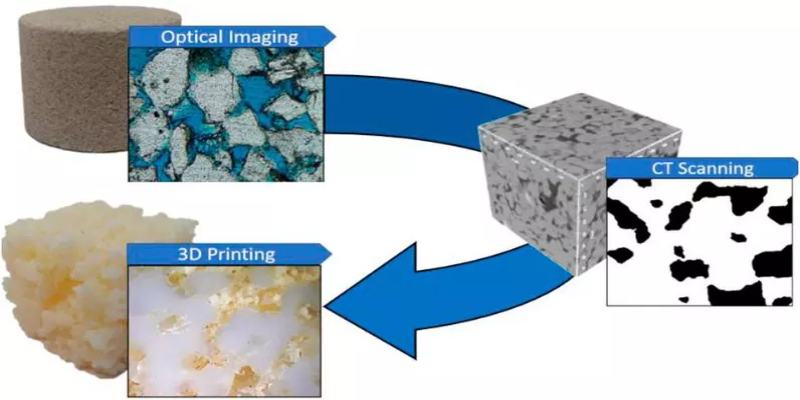In the dynamic landscape of education, the integration of innovative technologies has become instrumental in transforming traditional teaching methods. Among these innovative tools, 3D printing has proven to be a valuable asset in simplifying intricate concepts and fostering a deeper understanding among students. In this exploration, we delve into the various ways educators can utilize 3D printing and the use of 3D Printers in India to enhance the learning experience and make complex subjects more accessible.
• Tangible Learning Support
One of the primary advantages of 3D printing in education is its ability to create tangible, physical models. For subjects that involve intricate structures or abstract ideas, having a physical representation can significantly aid comprehension. Whether it’s a molecule in chemistry, a geological formation in earth science, or a historical artifact, 3D-printed models provide a hands-on experience that goes beyond traditional textbooks and visuals.
• Enhancing Spatial Intelligence
Certain subjects, such as geometry and engineering, heavily rely on spatial understanding. 3D printers allow educators to produce geometric shapes, architectural models, or even intricate biological structures that students can touch and manipulate. This tactile interaction enhances spatial intelligence, making it easier for students to grasp complex spatial relationships and geometric concepts.
• Bridging the Gap in Anatomy Studies
In disciplines like biology and medicine, understanding human anatomy can be challenging through conventional methods. 3D printing revolutionizes anatomy studies by enabling the creation of accurate anatomical models. From detailed organs to skeletal structures, students can explore the intricacies of the human body in a way that textbooks alone cannot convey. This hands-on approach fosters a deeper appreciation and understanding of anatomy.
• Prototyping in STEM Education
In the realms of science, technology, engineering, and mathematics (STEM), prototyping is a fundamental concept. 3D printing allows students to bring their design ideas to life. Whether it’s creating a prototype for a simple machine or a complex engineering project, students can witness the tangible outcomes of their theoretical knowledge. This practical application enhances their problem-solving skills and innovation capabilities.
• Customized Learning Tools
Every student has a unique learning style, and 3D printers facilitate the creation of customized learning tools. Teachers can tailor educational aids to suit individual needs, providing personalized resources that cater to diverse learning preferences. This inclusivity in teaching ensures that students receive the support they need to succeed.
• Encouraging Creativity and Design Thinking
Beyond the realm of specific subjects, 3D printing encourages creativity and design thinking. Students can engage in designing their projects, exploring their imaginations, and bringing their ideas into reality. This fosters a culture of innovation, where students learn not just from predefined concepts but also from the process of ideation, design, and execution.
• Real-World Applications
By incorporating 3D printing into the curriculum, educators can bridge the gap between theoretical knowledge and real-world applications. Students can witness the practical uses of their studies by creating prototypes that mimic real-world scenarios. This connection to tangible outcomes enhances the relevance of education and prepares students for future challenges in their respective fields.
• Collaborative Learning Environments
3D printing opens avenues for collaborative learning. Students can work together on designing and printing projects, fostering teamwork and communication skills. This collaborative approach mirrors real-world scenarios where professionals from diverse backgrounds come together to solve complex problems.
Industry-Relevant Skill Development
Integrating 3D printing into education equips students with skills that are highly relevant to modern industries. As industries embrace additive manufacturing, students familiar with 3D printing technologies are better prepared for the demands of the job market. This forward-thinking approach ensures that education remains aligned with the evolving needs of the workforce.
• Sustainability Education
3D printing service in India allows for the creation of objects using sustainable materials, contributing to environmental awareness. Educators can incorporate lessons on sustainability by encouraging students to explore eco-friendly filaments and design practices. This not only instills a sense of responsibility but also introduces students to the role of technology in sustainable practices.
3D printing has the potential to revolutionize education by making complex concepts more tangible and accessible. From hands-on learning aids to customized tools, real-world applications, and industry-relevant skill development, educators can leverage this technology to create a transformative learning experience. As we embrace the era of technological advancement, integrating 3D printing into education is not just an innovation; it’s a strategic investment in empowering the next generation with the tools they need to thrive in a complex world.
Elevate your printing experience with Ex3DP, the leading 3D printer Manufacturing Company in India. Explore the world of 3D printing with Ex3DP – Your premier destination for cutting-edge 3D printers in India. From manufacturing top-tier industrial 3D printers to providing exceptional 3D printing service in India, we’re your trusted partner for bringing your ideas to life. Embrace the future of education and craftsmanship with our ViSa Series, perfect 3D printers for students and architects.
